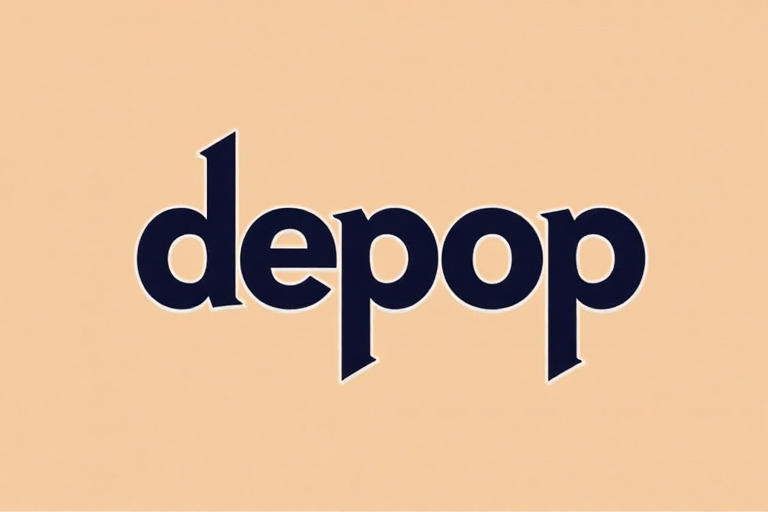In today’s digital age, selling trendy fashion on Depop isn’t just a side hustle—it’s a creative business opportunity. Whether you’re a fashion enthusiast or a budding entrepreneur, this guide will walk you through every step from setting up your store to leveraging secret strategies and innovative AI tools to boost your sales.
1. Getting Started with Depop
Understand the Platform
Depop is a unique blend of a social network and an e-commerce marketplace. It thrives on creativity, community, and style. Before you start, spend some time exploring the app. Observe trending items, successful seller profiles, and the types of content that capture attention.
Setting Up Your Account
- Download and Register: Install the Depop app and sign up using your email or social media.
- Create a Killer Profile: Your profile picture and bio should instantly convey your brand personality. Think of it as your storefront’s first impression.
2. Building Your Depop Store: Step‑by‑Step
A. Define Your Niche
Focus is key. Identify a niche that aligns with your passion and market demand:
- Vintage Streetwear
- Eco-friendly Fashion
- Retro & Bohemian Styles
- Upcycled Designer Pieces
Secret Tip: Use trend analytics tools (like Google Trends) and social listening tools (such as Brand24) to spot emerging fashion niches that are still underexploited.
B. Source Quality Inventory
- Thrifting and Wholesale: Look for unique items in thrift shops or buy wholesale from trusted vendors.
- Upcycling: Consider restoring or repurposing vintage pieces to add a personal touch.
- Local Finds: Partner with local artisans or designers to offer exclusive items.
C. Optimize Your Listings
- High‑Quality Photos: Use natural lighting and minimal backgrounds. Consider AI-powered photo editing tools like Remove.bg or Adobe Sensei to enhance images.
- Compelling Descriptions: Write detailed descriptions that include size, condition, fabric details, and any story behind the item.
- Pricing Strategy: Experiment with dynamic pricing tools that leverage AI to suggest the best price based on demand and market trends.
3. Boosting Sales with Practical Tools & AI
A. Essential Tools for Efficiency
- Inventory Management: Tools like QuickBooks or dedicated e-commerce management apps help keep your inventory organized.
- Social Media Scheduling: Use tools like Buffer or Later to schedule posts that drive traffic to your Depop store.
- Analytics: Monitor your performance with built‑in Depop analytics and external tools like Google Analytics.
B. Innovative AI Tools & Secret Strategies
- AI‑Powered Copywriting: Tools such as Jasper or Copy.ai can help craft persuasive product descriptions and social media posts.
- Chatbots for Customer Engagement: Automate responses with chatbots (e.g., ManyChat) to answer FAQs and boost customer service.
- Visual AI Assistants: Leverage AI for trend forecasting by analyzing social media imagery and fashion blogs, helping you stay ahead of the curve.
- Secret Strategy: Run limited‑edition drops and time‑sensitive flash sales. This creates urgency and can stimulate viral sharing. Experiment with “bundle deals” where buying multiple items triggers a discount.
4. Driving Traffic and Getting Noticed
A. Social Media Integration
- Instagram & TikTok: Post behind‑the‑scenes content, styling tips, and fashion haul videos.
- Influencer Collaborations: Partner with micro‑influencers who share your niche’s aesthetic. Their recommendations can amplify your reach.
- Hashtags & SEO: Use targeted hashtags (#DepopFinds, #VintageFashion, #EcoChic) to improve discoverability.
B. Community Engagement
- Interactive Content: Host Q&A sessions, live streams, or style challenges that encourage your followers to interact.
- Customer Reviews & Testimonials: Encourage buyers to leave reviews and share photos of them wearing your items. Social proof builds trust.
- Email Marketing: Build an email list and send newsletters featuring new arrivals, sales events, and exclusive behind‑the‑scenes looks.
5. Tracking Your Success and Scaling Up
A. Monitor Performance
- Sales Analytics: Track which items sell best, peak shopping times, and customer demographics.
- A/B Testing: Experiment with different pricing, descriptions, and promotional tactics. Use the data to refine your strategy continuously.
B. Scale Your Business
- Expand Inventory: Gradually increase the range of products as you discover what resonates most with your audience.
- Diversify Sales Channels: Consider listing on other platforms like Etsy or Poshmark to expand your reach.
- Stay Ahead with AI: Continuously adopt new AI tools for market analysis, customer service, and even personalized shopping experiences.
Conclusion
Selling trendy fashion on Depop is more than just listing items—it’s about creating an engaging brand, using technology to streamline your process, and implementing innovative strategies that set you apart. By following this guide, you’re well on your way to turning your passion into a profitable venture. Get started today and watch your Depop shop transform into a vibrant fashion hub!
